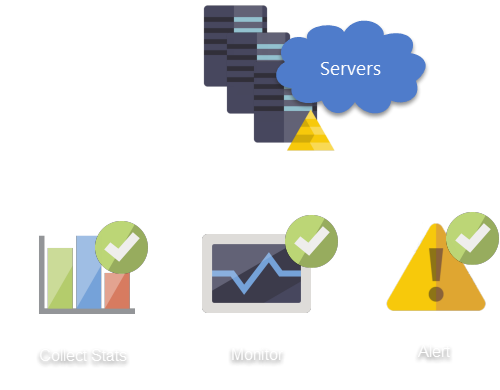LynX Monitor [CNC Nirvana]
Proactively monitor your entire JDE ecosystem.
Free yourself from mundane CNC tasks.

Ensure Uptime & Stability
LynX Monitor is the CNC Administrator’s best friend. It monitors your JDE system not just from a technical standpoint, but also from a business standpoint.
LynX Monitor does the grunt work, enabling you to respond to many issues before the users complain about them.
Download a free trial from our Store now!
System Features
 Web ConsoleConfigure the system through a user friendly web console. |

Single InstanceMonitor multiple servers, multiple releases from a single LynX Monitor instance. |

AgentlessNo agents to install on any server! |

AlertsAlerts can be emailed and/or logged to the Windows Event Log. |
Monitoring Features
|
Monitor Type |
What does it monitor? |
Applies To |
|---|---|---|

Ping |
Checks if a computer or device can be reached by pinging it. Alerts are sent when: | |

Port |
Checks if a port is reachable on a computer or device. Use this monitor to check if E1 ports on your Enterprise, HTML or Server Manager servers can be accessed. Alerts are sent out when: | |

Database Connectivity |
Checks if a database connection can be opened. Alerts are sent out when: | |

Diskspace |
Checks if disk space has exceeded the configured threshold. Alerts are sent out when: | |

Memory |
Checks if the total memory on the server has exceeded the configured threshold. Alerts are sent out when: | |

CPU |
Checks if the total CPU of the server has exceeded the configured threshold. Alerts are sent out when: | |

Proces Memory |
Checks if the memory consumed by a process has exceeded the configured threshold. Alerts are sent out when: | |

Proces CPU |
Checks if the CPU consumed by a process has exceeded the configured threshold. Alerts are sent out when: | |

Report |
Monitors the processing of reports on E1 report servers. Report thresholds can be set by report and version. Alerts are sent out when: | |

Queue |
Monitors queues on E1 report servers. Queue thresholds are set by queue name. Alerts are sent out when:
The monitor can also be configured to re-prioritize jobs if one user submits too many jobs within a short time. |
|

Kernel (Native) |
Checks if kernels are running. This is configured by kernel type. Alerts are sent out when: | |

Scheduler Server |
Checks if the E1 scheduler server is functioning properly. Alerts are sent out when: | |

Scheduled Report |
Checks if your critical scheduled reports are running as expected. Alerts are sent out when: | |

Subsystem |
Checks if subsystem jobs are processing. Alerts are sent out when: | |

Web App |
Monitors any web application, including E1. The monitor can be configured to send out screenshots of the browser along with the alerts. Alerts are sent out when: | |

File / Log |
Monitors any folder for files and the contents of the file for keywords. Keywords may include regular expressions and wild cards. Alerts are sent out when:
In addition, it can also perform the following tasks: |
|

SM Console, Home, Instance |
Checks if the Server Manager Console, Home and Instances are up. Alerts are sent out when: | |

Enterprise Server |
Monitors Enterprise Servers defined in Server Manager. You can set thresholds on: | |

Enterprise Server Process |
Monitors kernels of Enterprise Servers defined in Server Manager. You can set thresholds on: | |

Enterprise Server Disk |
Monitors disk usage of Enterprise Servers defined in Server Manager. You can set thresholds on: | |

Enterprise Server Kernel Range |
Monitors kernel range Enterprise Servers defined in Server Manager. Alerts are created when: | |

HTML Server |
Monitors HTML Servers defined in Server Manager. You can set thresholds on: | |

AIS Server |
Logins to AIS Server and opens forms. You can set thresholds on: | |

Call Object |
Monitors call object stats of HTML Servers defined in Server Manager. You can set thresholds on: | |

Command |
Runs a command and monitors its exit code. Exit codes can be tied to meaningful descriptions. Use this feature to monitor just about anything! Alerts are sent out when: | |

Event Log |
Monitors event logs on Windows computers. Alerts are sent out when: |
